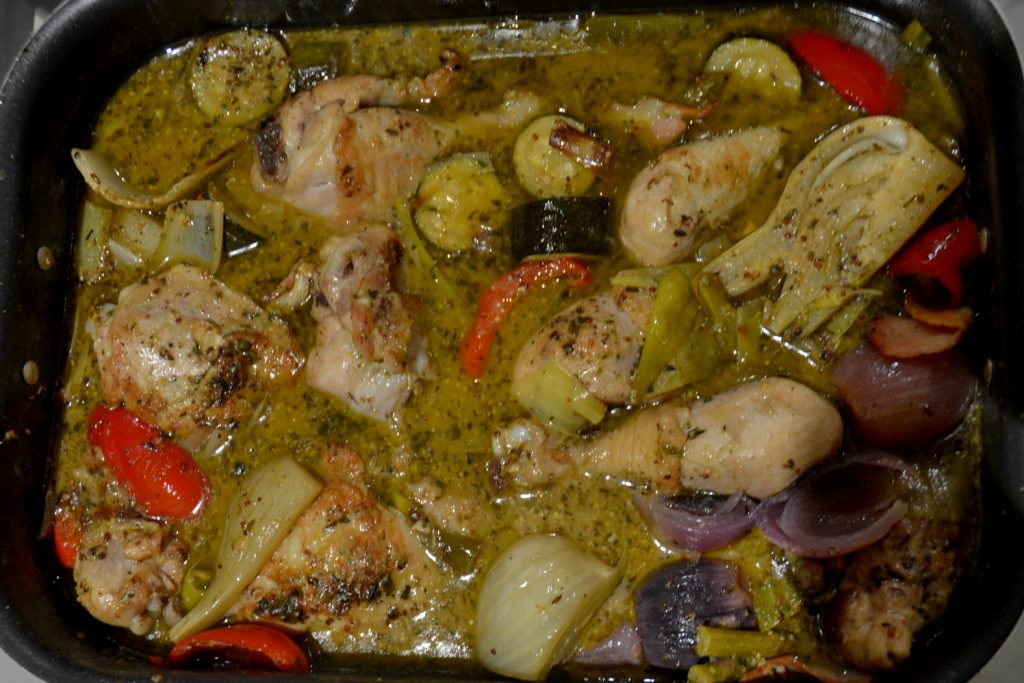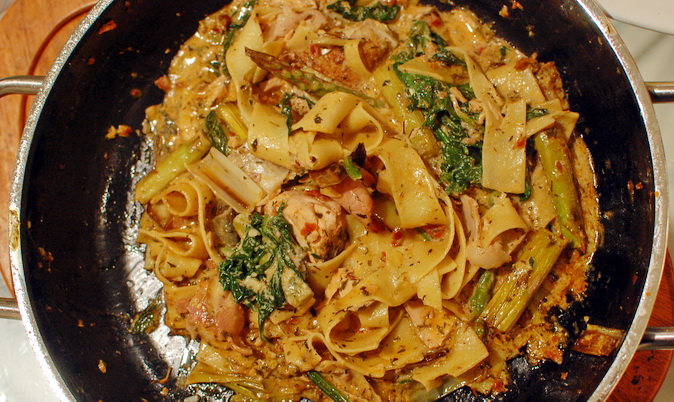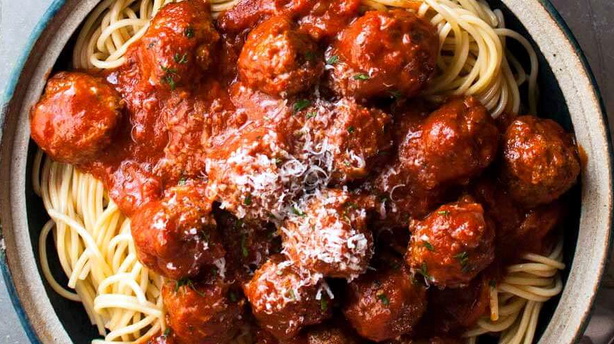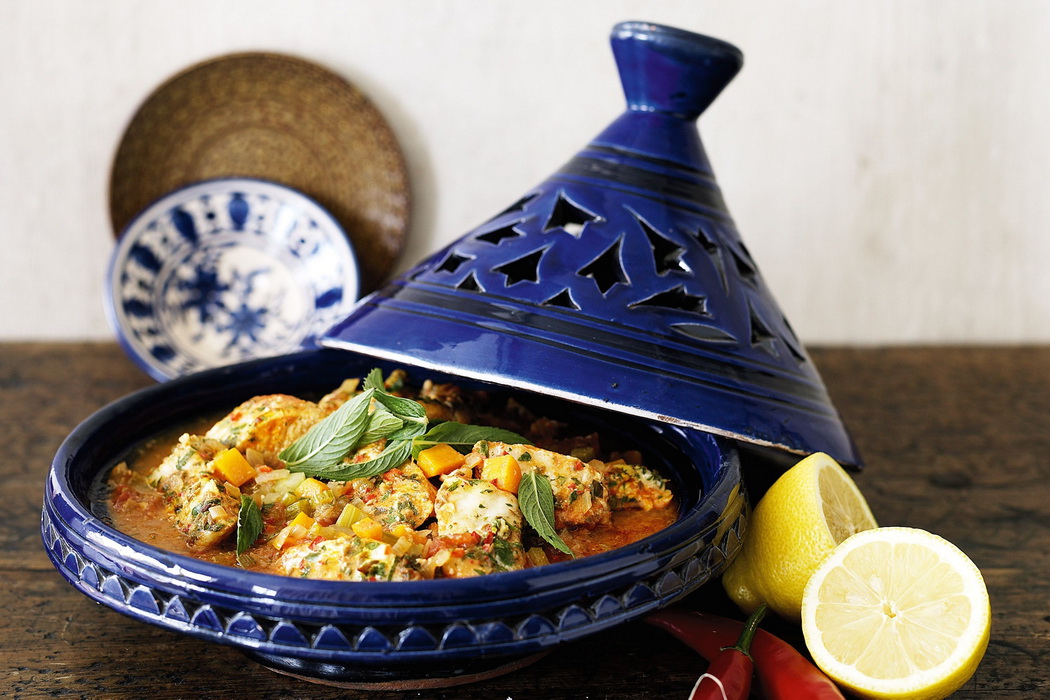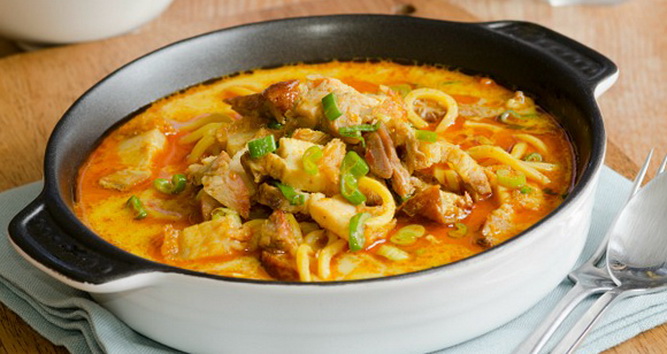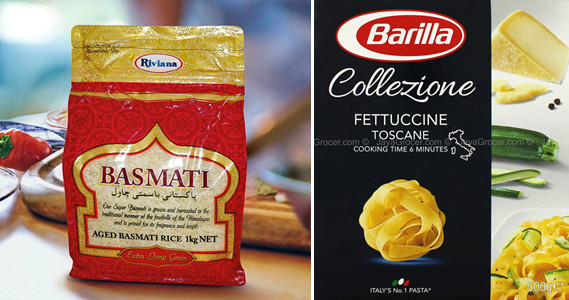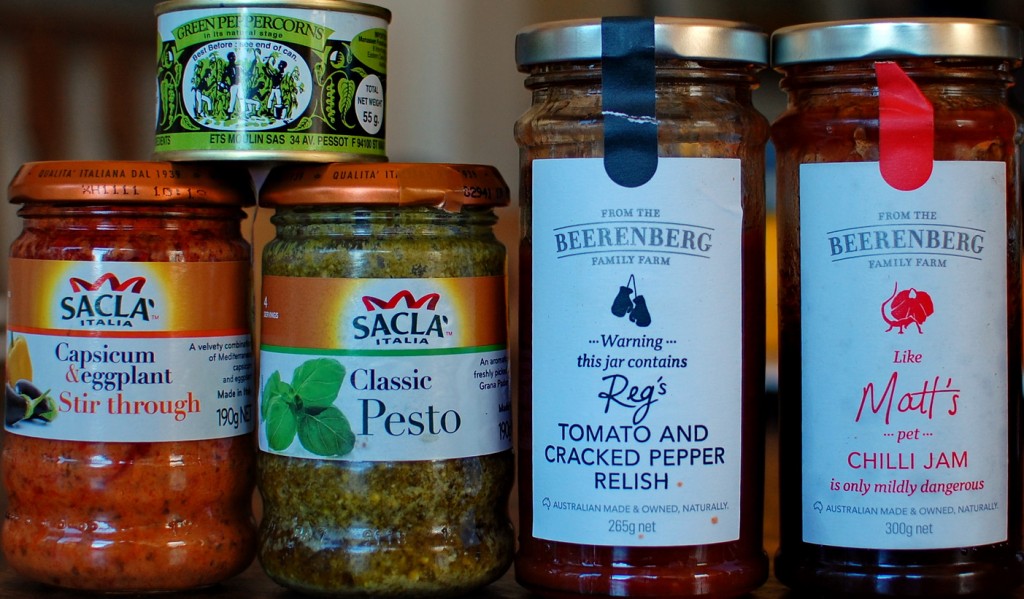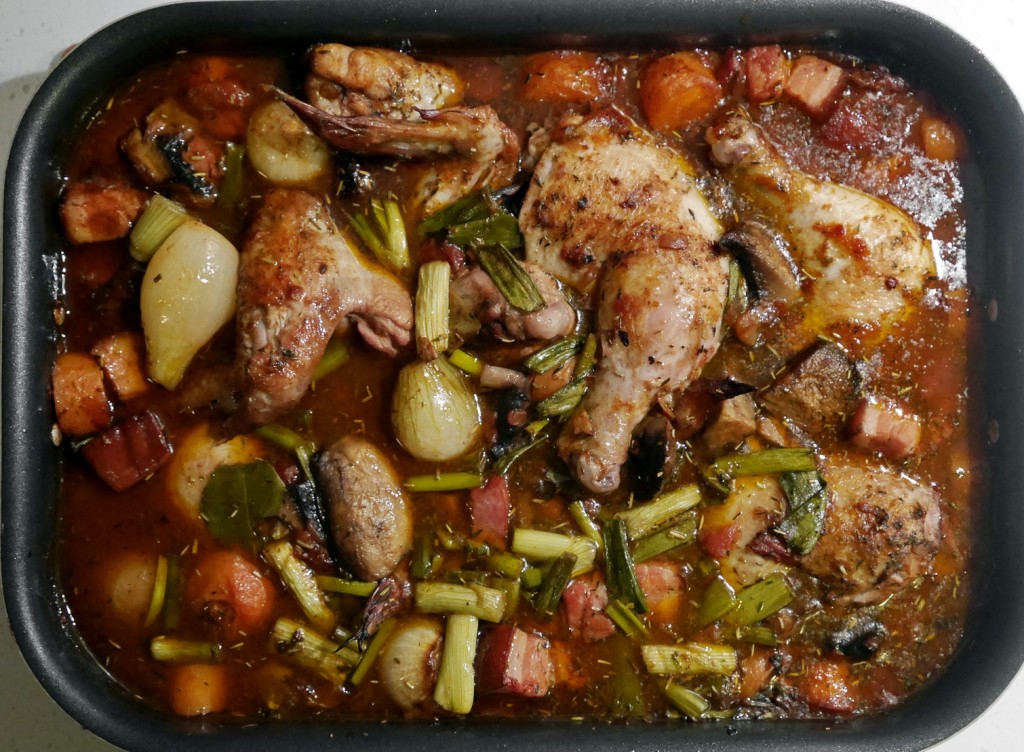This recipe from Alsace comes with a story: Monday was the day the women of the village used to do their washing, so they’d throw all the leftover bits into a big pot, add some Riesling and cover it with pastry. This one of those traditional leftover dishes that becomes a classic, like Paella and Frittata. Whatever is left in the fridge goes into the pot, and you can add some cheap cuts.
Then they’d take their pots to the Baker who would put them in his big oven, which was still hot from baking all those croissants and baguettes. In the afternoon, the women would collect their slow-cooked pots and take them home.
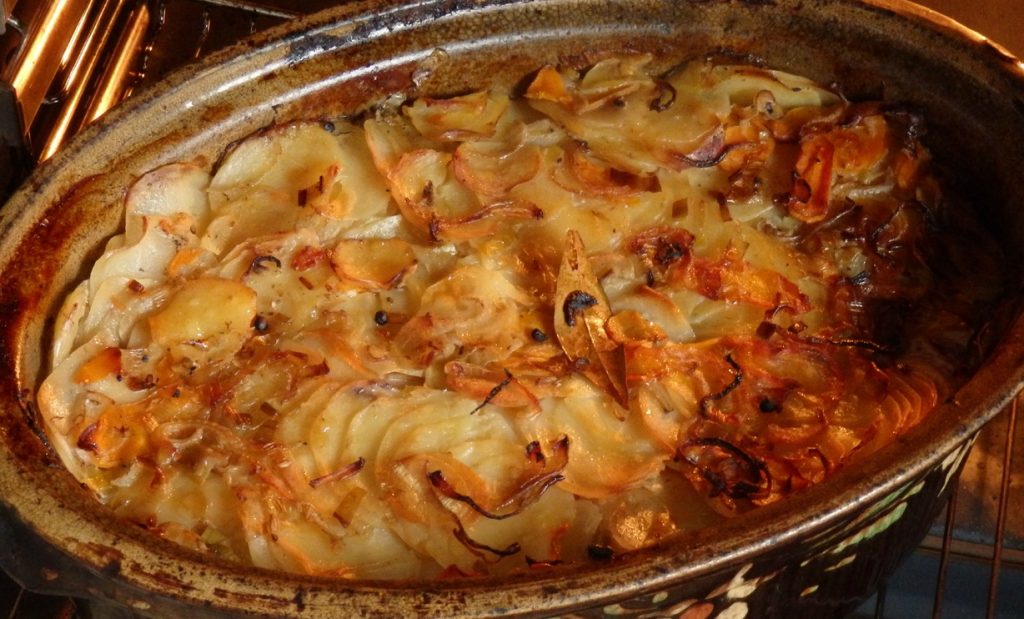
The Process
As always with these kinds of dishes, there are as many variations on the recipe as there are villages in Alsace. Pretty much anything goes. I chucked in some leftovers: a couple of chorizos, some smoked pork (Kassler), and some fennel. The rest I had to buy: chicken drumsticks, a couple of lamb chops and the veggies.
The basic process is
- chop everything into casserole-size chunks
- add the herbs, spices and seasoning
- slice the potatoes fairly thin
- put a layer on the bottom of the pot, add the rest of the ingredients
- add a bottle or two of white wine, then add a layer of thin potato slices on top.
This was my first crack at this dish, but I’ve had it a few times in restaurants including a couple in Alsace. So I knew what it should look and taste like, but I ran into a couple of minor problems on the way: the first one was that the usual wide, shallow casserole dish I mostly use didn’t work. This dish needs a tall pot with a lid.
The second problem surfaced later, when I checked progress during the 3 hours in the oven at 160 degrees: There was far too much wine in the pot, probably because I hadn’t packed the ingredients down properly. I scooped the excess out with a ladle, thinking I could reduce it later if I needed to. You want the liquid to come up to top layer of potatoes but not over it, so they can get brown and crisp.
You can just toss everything into the pot and cook it slowly, but I decided to brown the chicken and lamb in a pan with the garlic and onions (using duck fat for that authentic touch), and a dusting of flour on both sides. The sauce is meant to be light, not thick, but you don’t want it to be watery.
Ingredients
- Meat – a mix of your choice of beef, lamb, pork, chicken, thick-cut bacon, sausage
- 1 bottle of dry white wine, ideally Riesling but it’s a minor point
- Optional: a cup of stock (I used a cube)
- The recipe call s for 2 tsp. juniper berries – I didn’t have any so I used green peppercorns
- 3 cloves of garlic, squashed and chopped
- 3 – 4 medium carrots, thinly sliced
- 4 – 5 spring onions
- 1 smallish fennel bulb, chopped
- One leek, coarsely chopped
- 3 – 4 potatoes, peeled and sliced (you can use more)
- Seasoning (liberal)
- Thyme and a couple of bay leaves
- Half a cup of flour
I added a couple of things:
- Passata – just a cup; I use it as a thickening agent. In a big dish like this, you won’t taste the tomato
- Bacon pieces mixed into the top layer of potatoes
- I didn’t make the pastry cover, but used a lid which I took off during the final hour of baking to help the potatoes brown
It’s cool to make your own mods to a dish like this, after you’ve done it once. The beauty of it is that it more or less cooks itself.

